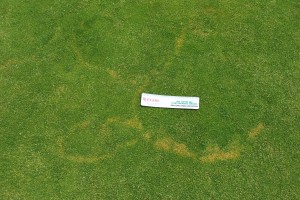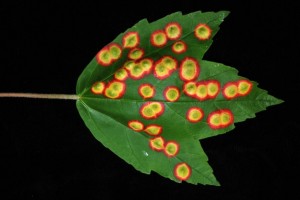Pepper weevil adults have been found now in four non-farm locations in south Jersey. In each instance the trapped weevils were likely brought into the state on, or in, peppers from the southern US or Mexico. [Read more…]
Archives for May 2013
Brown Ring Patch
Several samples of brown ring patch found their way into the Plant Diagnostic Laboratory this week. Sometimes confused with take-all, fairy ring, or yellow patch, this relatively newly described malady of Poa annua putting greens is caused by the fungus Waitea circinata.
Cranberry: Insect Update 5/21/13
- Blackheaded fireworm
- Spotted fireworm
- Sparganothis fruitworm
- Cranberry Blossomworm
- Blunt-nosed leafhopper
- New Insecticide Closer SC
The cranberry season has been off to a very slow start due to the cold weather. Insect activity is just starting to increase. Thus, growers need to intensify their scouting efforts. The following insect pests bear special mention for early-season scouting:
[Read more…]
Bizzaro World
The crew of the Plant Diagnostic Laboratory are always on the hunt for new and exciting examples of plant damage. Last week, out walking her dog, Sabrina Tirpak our Principle Technician and photographer happened upon a red maple with these amazing red leaf spots.
Tomato Disease Forecasting Report 5-21-13
5-21-13 Tomato Report – Click to Download
Disease severity values (DSVs) for early blight, septoria leaf spot, and tomato anthracnose development are determined daily based on leaf wetness (due to rainfall, dew) and air temperature.
On a daily basis DSV values can range from 0 to 4 where 0 = no chance for disease development to 4 = high chance for disease development.
DSVs are accumulated during the production season.Fungicide applications are based on an individually determined DSV threshold. The first fungicide application for the control of these three diseases is not warranted until 35 DSVs have accumulated from your transplanting date. After that, growers can base fungicide applications on different DSV thresholds.
Potato Disease Forecasting Report 5-21-13
Potato Disease Forecasting Report 5-21-13 – Click to Download
Welcome to the new potato report for 2013! As always, we will be tracking DSVs for Late blight development and calculating P-days for initiating the first early blight fungicide application. Remember the threshold for P-days is 300! Once 300 P-days is reached for your location early blight fungicide applications should be initiated.


